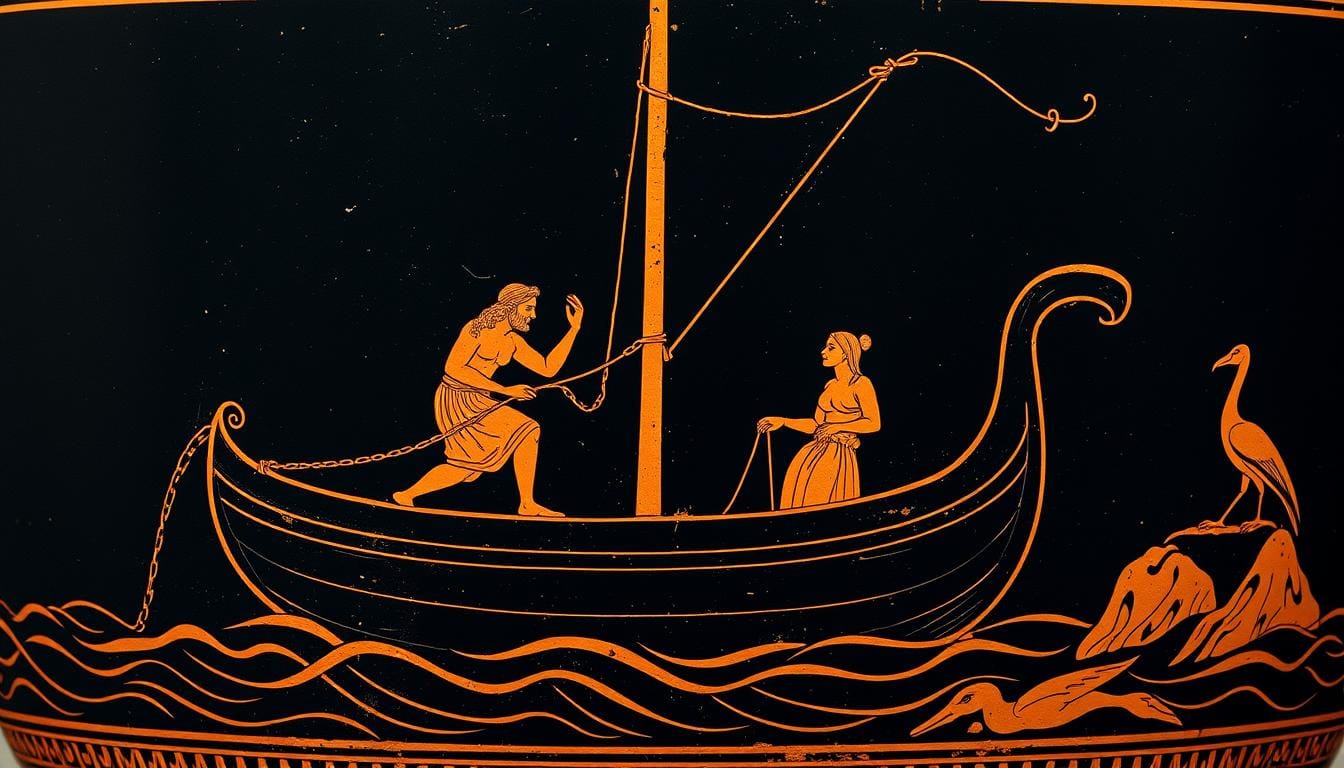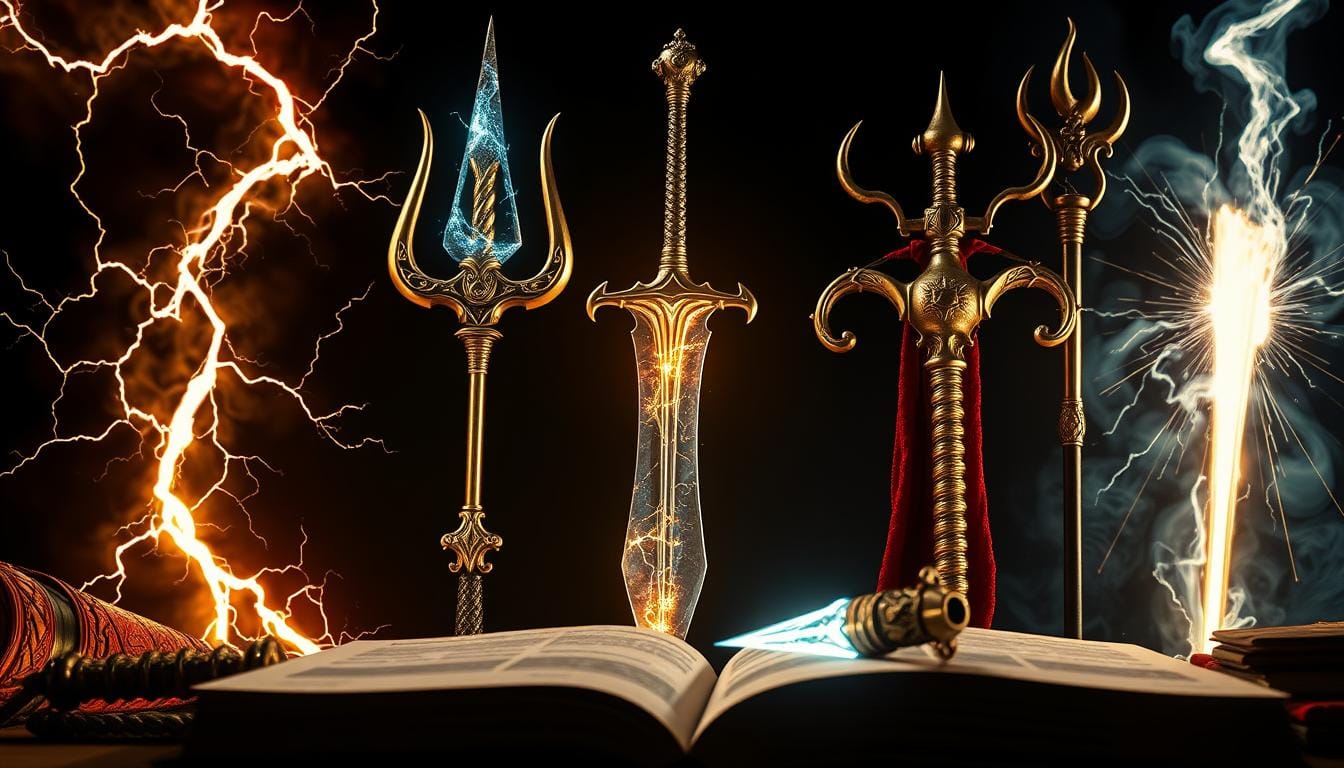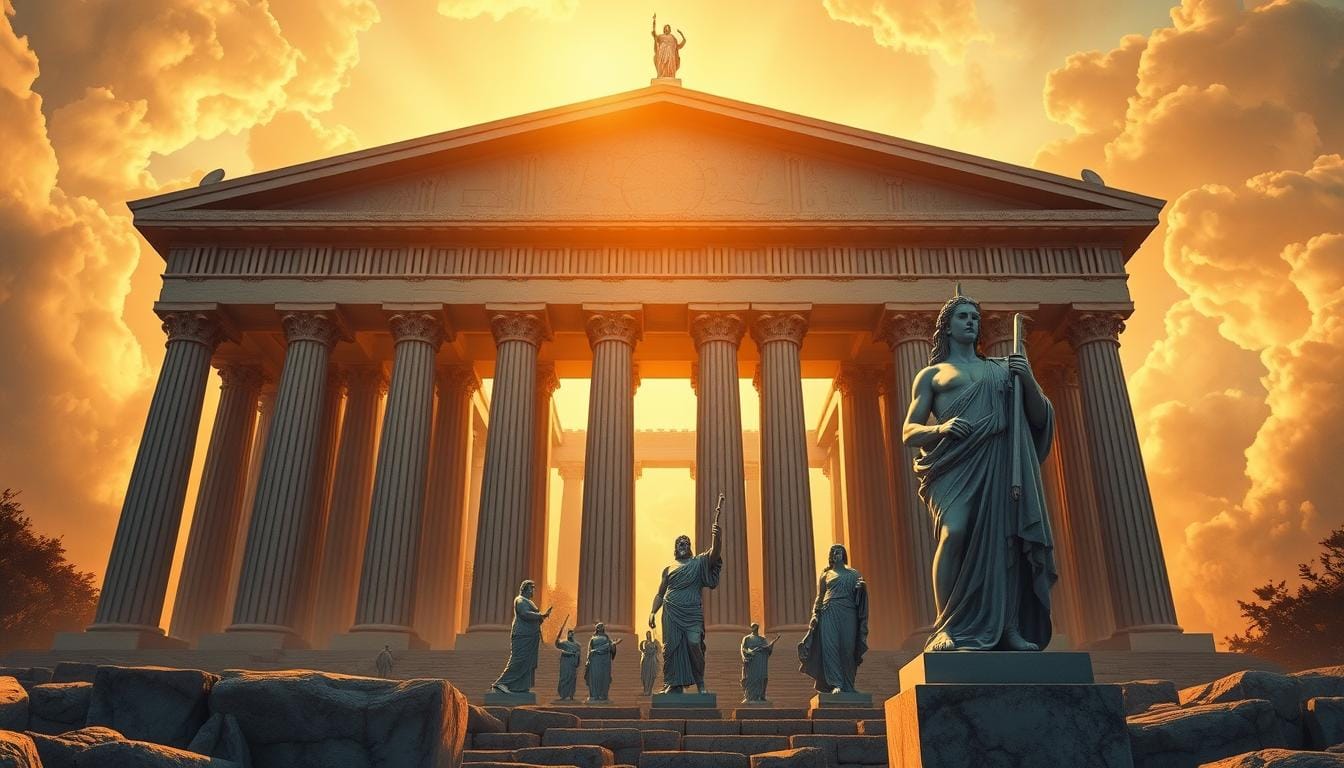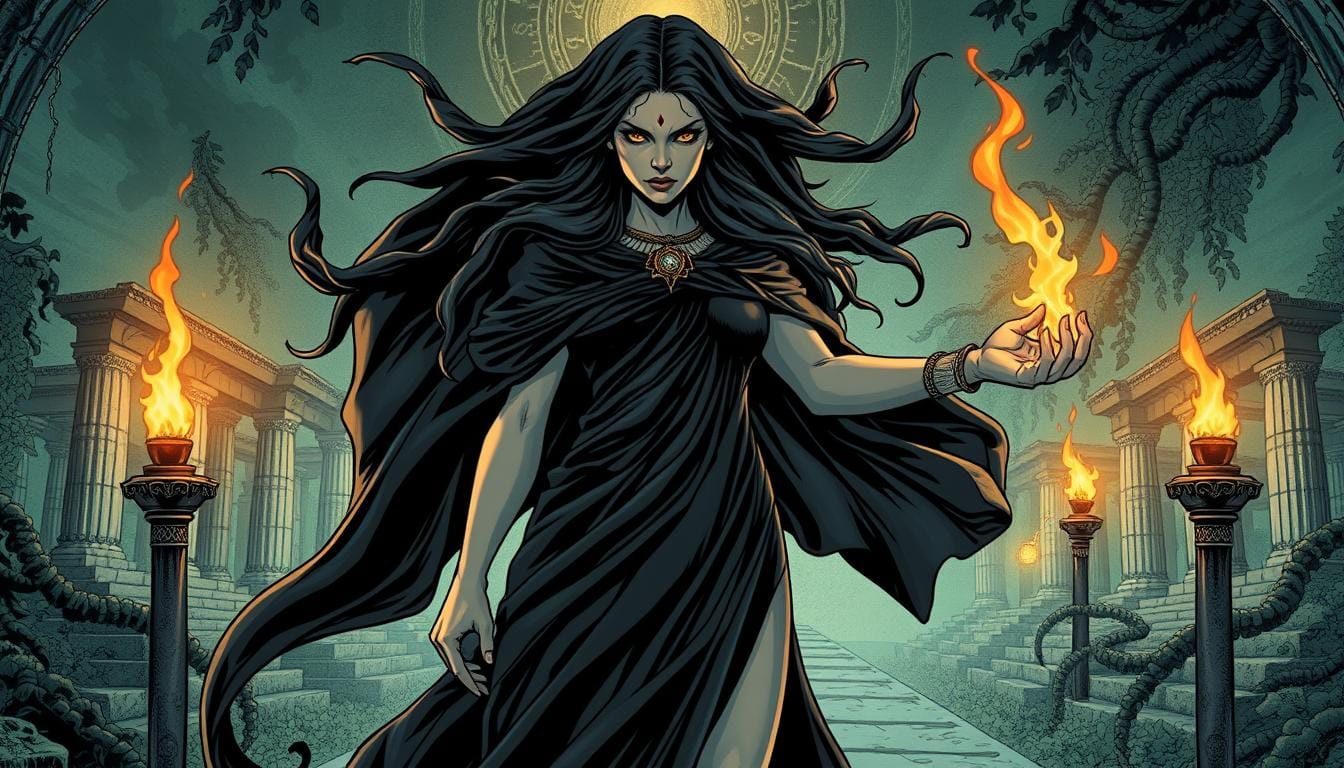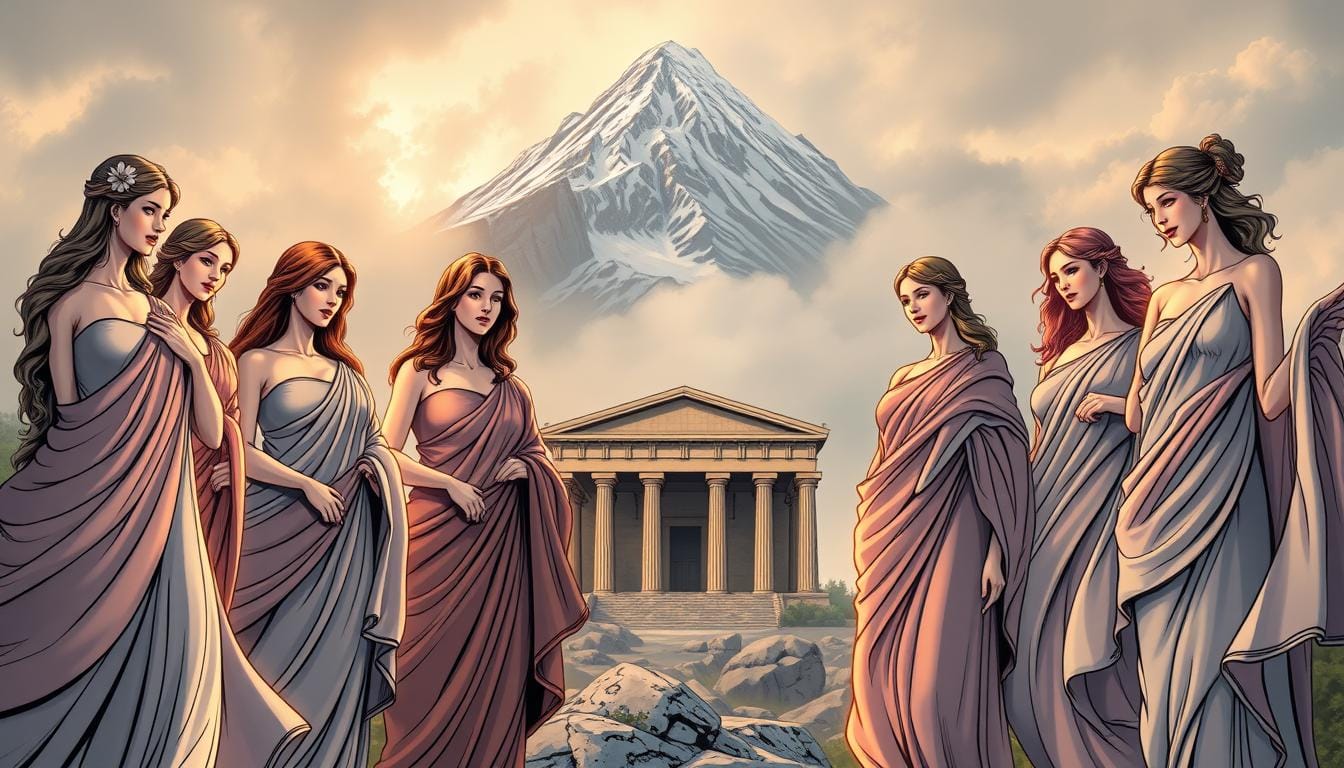In the vast pantheon of Greek mythology, few entities embody the concept of darkness as profoundly as Erebus and Tartarus in Greek mythology. These primordial deities represent different aspects of the cosmic void that existed before the formation of the world. Unlike the anthropomorphic Olympian gods who came later, these ancient forces were fundamental components of the universe itself. While Erebus personified darkness in its purest form, Tartarus represented both a deity and a physical realm of punishment in the deepest part of the underworld. Their existence contrasts with other primordial entities like Chaos, Gaia, and Uranus, highlighting the ancient Greeks’ complex understanding of cosmology and the forces that shaped their universe.
Erebus: Personification of Darkness in Greek Mythology
Erebus emerges as one of the first primordial deities in Hesiod’s Theogony, born directly from Chaos, the gaping void that preceded all existence. As Hesiod writes, “From Chaos came forth Erebos and black Night; but of Night were born Aether and Day, whom she conceived and bore from union in love with Erebos.” This genealogy establishes Erebus not merely as a god but as darkness itself—an elemental force woven into the fabric of creation.
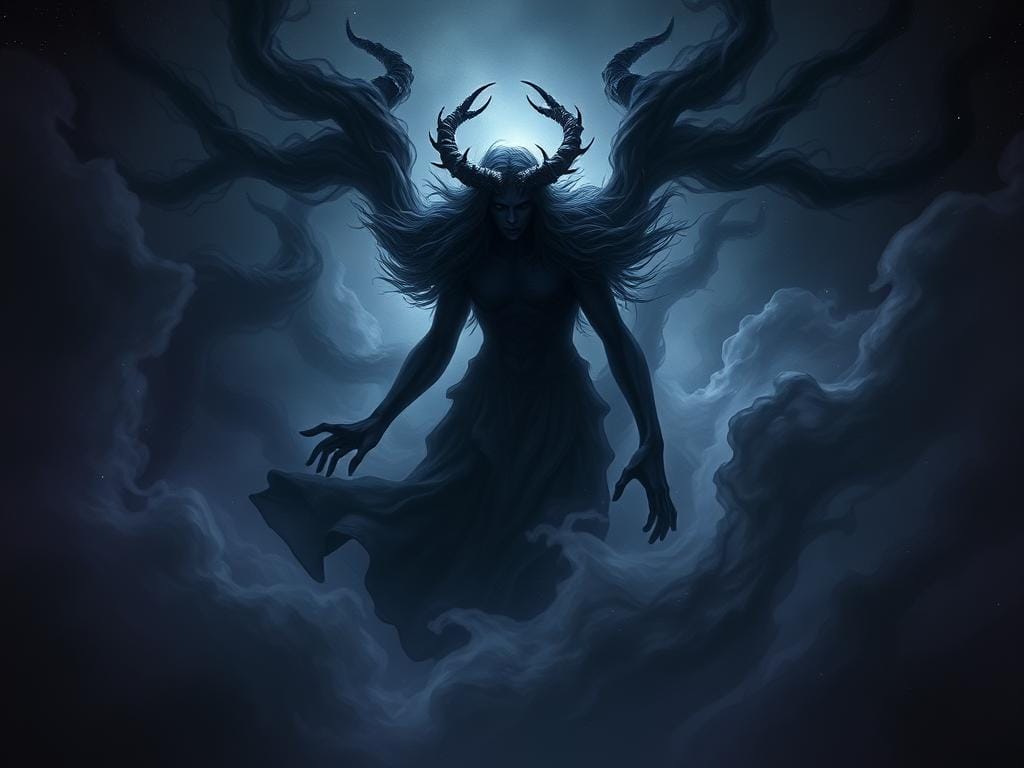
Origin and Nature of Erebus
Unlike the later Olympian gods, Erebus lacks a defined physical form. He represents the concept of darkness itself—specifically, the deep darkness that filled the spaces between the cosmos. The etymology of his name derives from a Proto-Indo-European root meaning “darkness” or “to cover,” reflecting his fundamental nature as the absence of light. This abstract quality makes Erebus one of the most enigmatic figures in Greek mythology, existing as a state of being rather than a personified deity with human-like qualities.
“In truth at first Chaos came to be, but next wide-bosomed Earth, the ever-sure foundation of all the deathless ones who hold the peaks of snowy Olympus, and dim Tartarus in the depth of the wide-pathed Earth, and Eros, fairest among the deathless gods… From Chaos came forth Erebos and black Night.”
— Hesiod, Theogony
Union with Nyx and Offspring
The union between Erebus and Nyx (Night) represents one of the earliest cosmic partnerships in Greek mythology. From their union came entities that established the fundamental rhythm of existence: Aether (Light) and Hemera (Day). This creation story illustrates a profound philosophical concept—that light and day emerge from darkness and night, establishing the cyclical nature of the universe. This paradoxical relationship, where opposites generate each other, reflects the Greek understanding of cosmic balance.

Beyond Aether and Hemera, some accounts attribute other offspring to Erebus and Nyx, including various “daimones” or spirits representing aspects of human experience. According to Cicero and Pseudo-Hyginus, these included entities like Moros (Doom), Thanatos (Death), Hypnos (Sleep), and the Oneiroi (Dreams)—all concepts associated with darkness and the unknown.
Cultural Interpretations
As a metaphysical concept, Erebus transcended mere mythological storytelling to become a philosophical symbol in ancient Greek thought. The darkness he embodied represented not evil but rather the unknown—the mysteries that exist beyond human comprehension. Later interpretations, particularly during the Hellenistic period, began to associate Erebus with the underworld, though this conflation likely stems from the natural connection between darkness and the subterranean realm.
Was Erebus considered evil in Greek mythology?
No, Erebus wasn’t considered evil in Greek mythology. As a primordial deity, he existed beyond moral classifications of good and evil. He simply represented darkness as a fundamental cosmic element. The association of darkness with evil came much later in Western thought, particularly with the influence of dualistic religious concepts.
Tartarus: The Abyss of Punishment in Greek Mythology
While Erebus embodied abstract darkness, Tartarus in Greek mythology represented something more tangible—a physical realm located in the deepest part of the cosmos. Hesiod describes Tartarus as being “as far beneath the earth as heaven is above earth,” emphasizing its remote and inaccessible nature. This cosmic positioning established Tartarus as the ultimate “other” space, removed from both the world of humans and the realm of the gods.
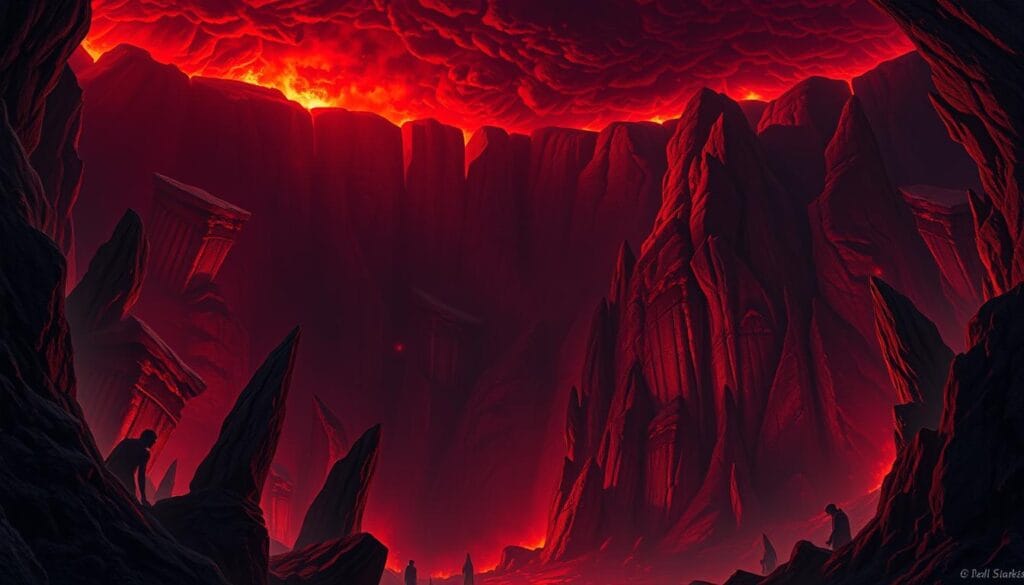
Tartarus as Deity and Realm
Tartarus possessed a dual nature in Greek mythology—existing simultaneously as a primordial deity and as a physical location. As a deity, Tartarus emerged directly from Chaos, making him a sibling to Gaia (Earth), Eros (Love), and Erebus. However, unlike these other primordial beings, Tartarus became more strongly identified with his physical manifestation—the pit that served as the universe’s dungeon.
“And misty Tartarus in the depth of the wide-pathed Earth, and Love, fairest among the deathless gods, who unnerves the limbs and overcomes the mind and wise counsels of all gods and all men within them.”
— Hesiod, Theogony
This realm was described with fearsome attributes—surrounded by a bronze wall and three-fold layers of night, with gates of bronze reinforced by Poseidon. These descriptions emphasize Tartarus not merely as a location but as a prison specifically designed to be inescapable, even for immortal beings.
Tartarus vs. Hades: Distinct Realms
A common misconception equates Tartarus with Hades, but these were distinct cosmic regions in Greek mythology. Hades (named after its ruler, the brother of Zeus) was the general underworld where most souls went after death. Tartarus, by contrast, was specifically a place of punishment located far below Hades—reserved for the most heinous offenders against cosmic order.
Hades
- General underworld for all deceased souls
- Ruled by the god Hades
- Contained various regions including Elysium and Asphodel Meadows
- Not inherently a place of punishment
- Located just beneath the earth
Tartarus
- Specific prison for divine offenders and worst criminals
- Both a primordial deity and a place
- Exclusively a realm of punishment and imprisonment
- Located far beneath Hades at the cosmic depths
- Surrounded by bronze walls and layers of night
Prisoners of Tartarus
Tartarus gained its fearsome reputation as the prison for those who committed cosmic crimes. Most famously, it became the prison for the Titans after their defeat in the Titanomachy—the great war against Zeus and the Olympian gods. Cronus and most of the other Titans were bound in Tartarus, symbolizing the new cosmic order established by Zeus.
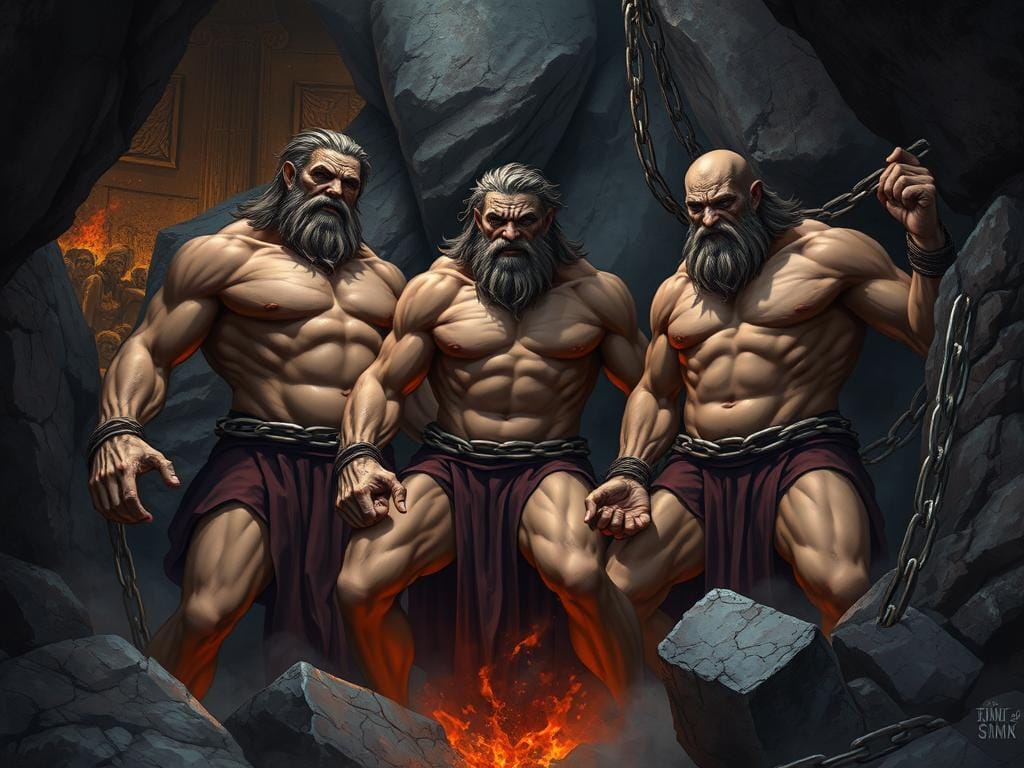
Beyond the Titans, several infamous human offenders were condemned to eternal punishment in Tartarus. Sisyphus, who cheated death twice, was sentenced to eternally push a boulder uphill only to watch it roll down again. Tantalus, who served his son as a meal to the gods, was condemned to stand in a pool of water beneath a fruit tree, with both food and drink eternally out of reach. Ixion, who attempted to seduce Hera, was bound to a fiery wheel that turned forever.
Tartarus in Ancient Texts
Homer’s Iliad describes Tartarus as “as far beneath Hades as heaven is above earth,” emphasizing its remote position in the cosmic hierarchy. In Book VIII, Zeus threatens to cast disobedient gods into “Tartarus, very far, where is the deepest gulf beneath the earth, the gates whereof are of iron and the threshold of bronze, as far beneath Hades as heaven is from earth.”
Virgil’s Aeneid elaborates on Tartarus as a place of punishment, describing it as surrounded by the flaming river Phlegethon and a triple wall. The Roman poet details the various punishments inflicted on the condemned, creating one of the most vivid literary depictions of this cosmic prison that would later influence medieval conceptions of Hell.
Test Your Knowledge: Primordial Deities Quiz
How Well Do You Know Greek Primordial Deities?
Challenge yourself with our interactive quiz about Erebus, Tartarus, and other primordial forces in Greek mythology. Test your understanding of these ancient cosmic entities!
Erebus vs. Tartarus: Symbolic Contrasts in Greek Mythology
Though both Erebus and Tartarus in Greek mythology are associated with darkness and the depths, they represent fundamentally different cosmic principles. Erebus embodies darkness as an abstract concept—the absence of light that existed as a primeval condition of the universe. Tartarus, meanwhile, represents a more concrete manifestation of cosmic justice—a physical location designed specifically for punishment and containment.
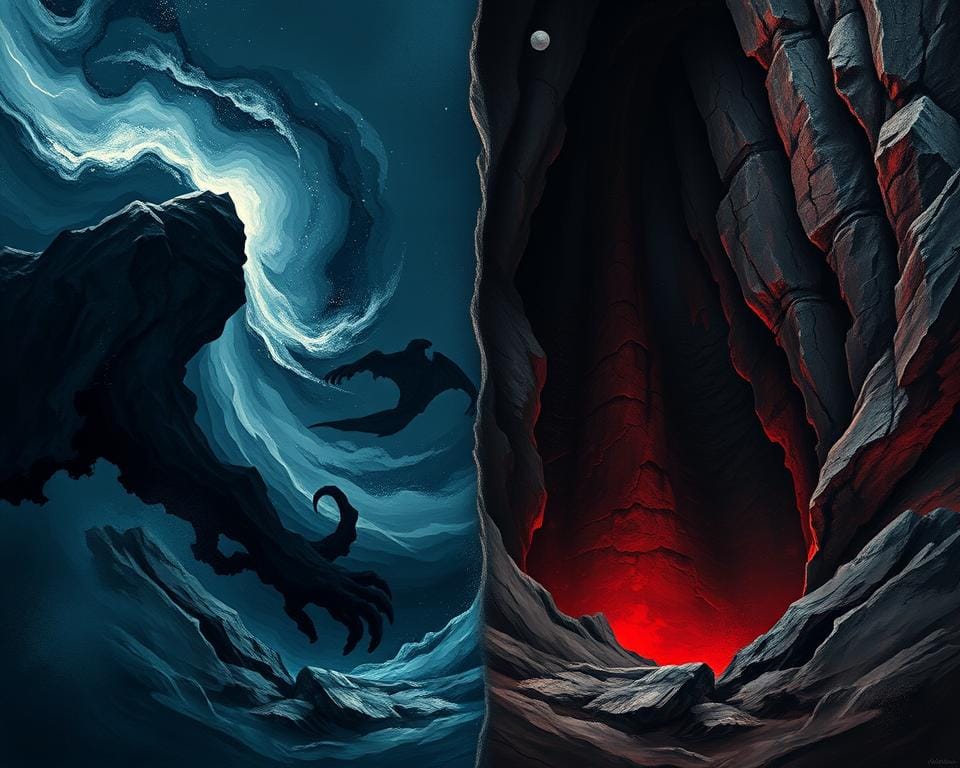
| Aspect | Erebus | Tartarus |
| Nature | Abstract darkness, primordial void | Physical abyss, cosmic prison |
| Symbolic Meaning | The unknown, mystery, potential | Justice, consequence, order |
| Relationship to Humans | Distant, conceptual | Cautionary, threatening |
| Philosophical Role | Represents primordial state before creation | Represents cosmic balance and retribution |
Different Aspects of Darkness
The contrast between these deities reflects the ancient Greek understanding of darkness as having multiple dimensions. Erebus represents darkness as a natural state—neutral and primordial. Tartarus, however, represents darkness with purpose—specifically designed for containment and punishment. This distinction highlights the sophisticated way in which Greek mythology approached cosmic forces, recognizing that similar elements could serve vastly different functions in the universal order.
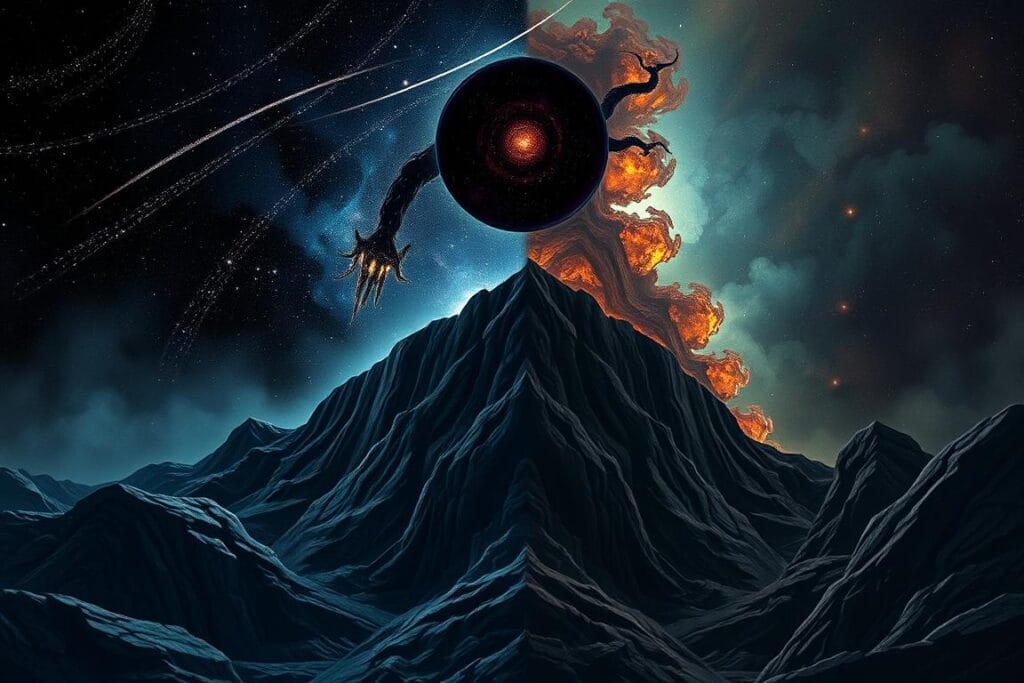
Connection to Greek Philosophy
The distinction between Erebus and Tartarus connects to broader themes in Greek philosophical thought. The Greeks were deeply concerned with understanding the nature of the cosmos and humanity’s place within it. Erebus represented the mysteries that exist beyond human comprehension—the darkness from which all things emerge. Tartarus, meanwhile, embodied the Greek preoccupation with justice and cosmic balance—the idea that the universe itself enforces order through consequence.
The Enduring Legacy of Erebus and Tartarus
The concepts of Erebus and Tartarus in Greek mythology have cast long shadows through Western literature and thought. From Dante’s Inferno to Milton’s Paradise Lost, these primordial forces have influenced how we conceptualize cosmic darkness and divine punishment. Even in modern popular culture, from fantasy literature to video games, echoes of these ancient entities persist—testament to humanity’s enduring fascination with the depths of darkness and what might dwell there.
What is it about these primordial forces that continues to captivate our imagination? Perhaps it is that they represent the ultimate unknown—the darkness that existed before light, the depths beyond our reach. In a world increasingly illuminated by science and technology, do Erebus and Tartarus speak to our primal recognition that some mysteries remain, and some depths still await exploration?
Explore More Greek Mythology
Delve deeper into the fascinating world of Greek primordial deities and discover how these ancient concepts continue to influence our understanding of the cosmos.
How to Cite this Article
For academic citation:
“Erebus & Tartarus: The Depths of Darkness in Greek Mythology,” Greek Mythology Studies, August 2023, URL.
For online reference:
Use the URL of this page in your references list.
